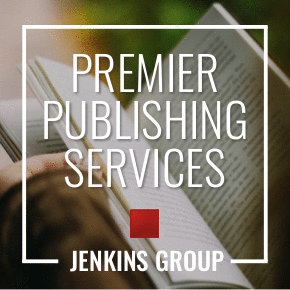Learn More about Sarah Mackey
I actually started out as a participant in NaNoWriMo way back in 2002, then started volunteering in my local NaNoWriMo region in 2003. In 2008, I came to the annual fundraising gala in San Francisco and started working with the staff. As Community Liaison, I am in charge of our volunteer program—we have over 650 volunteers all over the world who organize NaNoWriMo events in their regions. I also manage all of our social media platforms, coordinate our library and bookstore partnership programs, handle our press coverage, and help organize the fundraising gala.

Feature
50,000 Words in 30 Days
Get Ready for National Novel Writing Month
A Note From the Editor: Want to write a novel? Think you could do it in thirty days? Time to give National Novel Writing Month (NaNoWriMo) a try. This November, take the challenge and write your 50,000-word novel in just 30 days. Sarah Mackey, Community Liaison for NaNoWriMo, gives Independent Publisher the details of the month long writing marathon.
A Fun Challenge
National Novel Writing Month is a fun, seat-of-your-pants approach to novel writing. Participants begin writing on November 1. The goal is to write a 50,000-word (approximately 175-page) novel by 11:59:59 PM on November 30.
Because of the limited writing window, the ONLY thing that matters in NaNoWriMo is output. It’s all about quantity, not quality. This approach forces you to lower your expectations, take risks, and write on the fly.
Last year, in the main NaNoWriMo program, we had 256,618 participants, and 36,843 of them won, which is about 14%. Our Young Writers Program, for school-aged kids and young adults, had 51,133 participants and 16,334 winners, for a win rate of about 32%.
Good Times
I've been involved in NaNoWriMo for so long that it's hard to narrow down my favorite memories! So many of them are from my own region in Edmonton, Alberta—we have a large and vibrant community there and it's been a really strong influence on my life these last 11 years.
Maybe my favorite story was one year when a handful of us went to a bed and breakfast for the weekend to work on our novels. It happened to be the weekend that the clocks changed, and we all agreed that we were going to spend the hour before the clocks went back writing as furiously as we could. We all wrote outrageously fast (and badly), and when the clock turned back, we realized it had started snowing while we'd been writing. It was 2AM, we were in the middle of nowhere, and we shut down our computers and went out to play in the snow. It felt genuinely magical, like we were really living that hour twice, and if I listen to the music I was listening to while I wrote that night I still get a tingle down my spine.
From an organizational point of view, one of the coolest things we ever did was set up a team of volunteers around the world to kick off November on Twitter. Every single hour, we had someone counting down to the start time, and watching the entire world start writing one time zone at a time was an amazing reflection of just how international this organization is.
Great Novels
We don't actually see the novels themselves when people finish them—our robotic word counters are the only contact that we have with the finished product. But the list of published novels is growing at an amazing rate. You can see a mostly-complete list of traditionally published novels here: http://www.nanowrimo.org/en/publishedwrimos.We don't track the self-published ones yet, but there are hundreds if not thousands of them.
Probably the two best-known NaNoWriMo novels that have gone on to publishing success are The Night Circus by Erin Morgenstern, which came out last year and rocketed to the top of the New York Times Bestseller list, and Water for Elephants, which was a wildly popular book that was recently made into a movie.

The Programs Affiliated with NaNoWriMo
The Young Writers Program is tailored to kids in K-12 who want to write novels, either taking part as a class with their teacher, or independently working on their projects. They set their own word count goals, and we have resources available for teachers or librarians who are participating in the event. The workbooks are designed around the curriculum standards, and we hear overwhelmingly positive things about the impact it has on kids who participate. It really is amazing to see how it completely changes the attitude they have towards writing.
Camp NaNoWriMo was a new initiative in 2011, and it was in response to people who wanted to participate but couldn't do so in November, and those who wanted to write more than one month a year. It's a scaled down version of the main event, and it has a camp theme that adds a level of whimsy that we really enjoy. This year's Camp events took place in June and August.
And finally, the Office of Letters and Light is the umbrella non-profit that runs NaNoWriMo.
Other Opportunities to Get Involved
We like to think NaNoWriMo itself is a pretty special event, but in addition we have our annual fundraising gala on November 18. It is a ton of fun—you can learn more about it here: http://www.nanowrimo.org/en/writeathon

